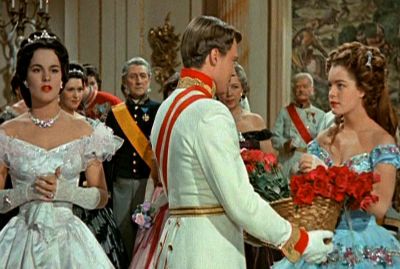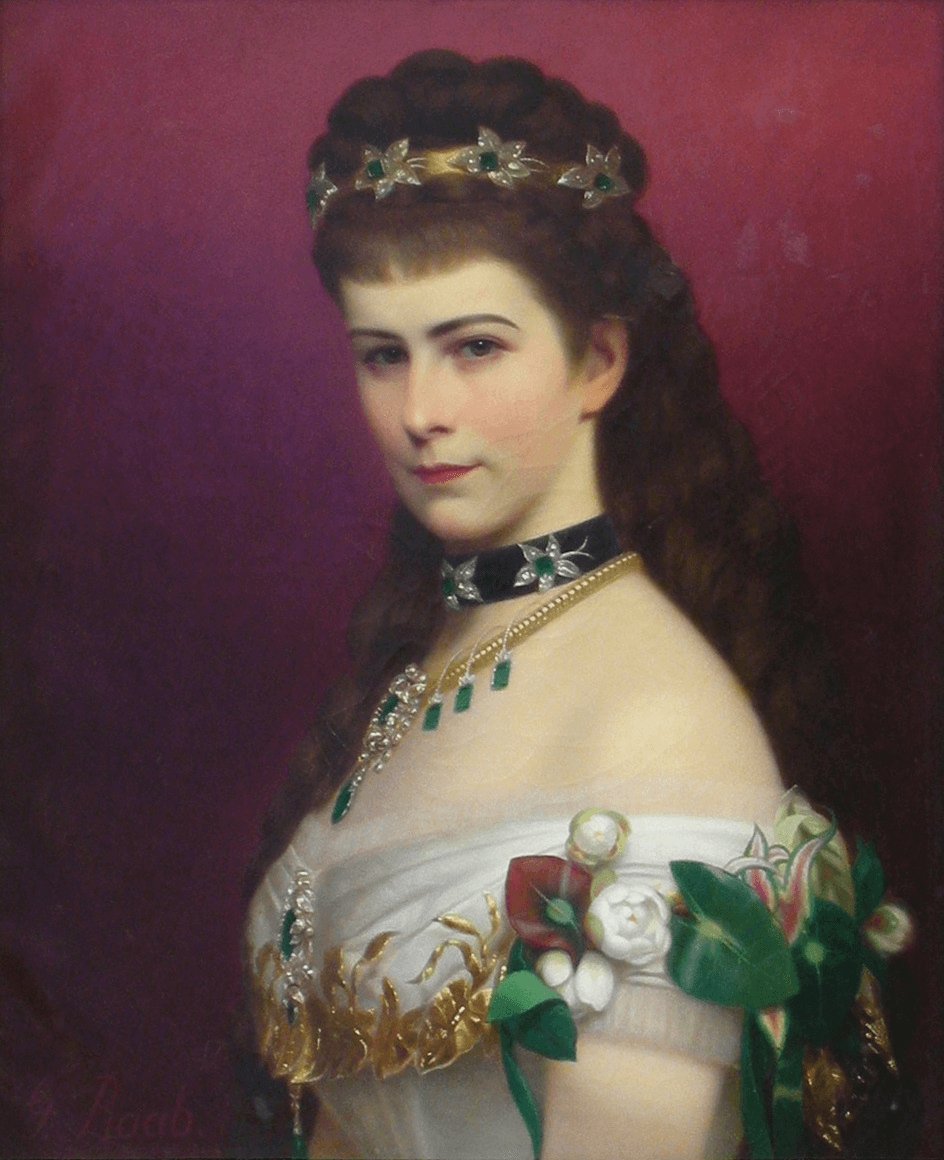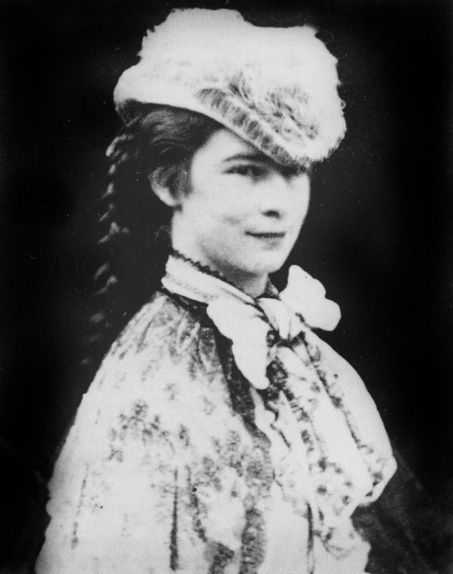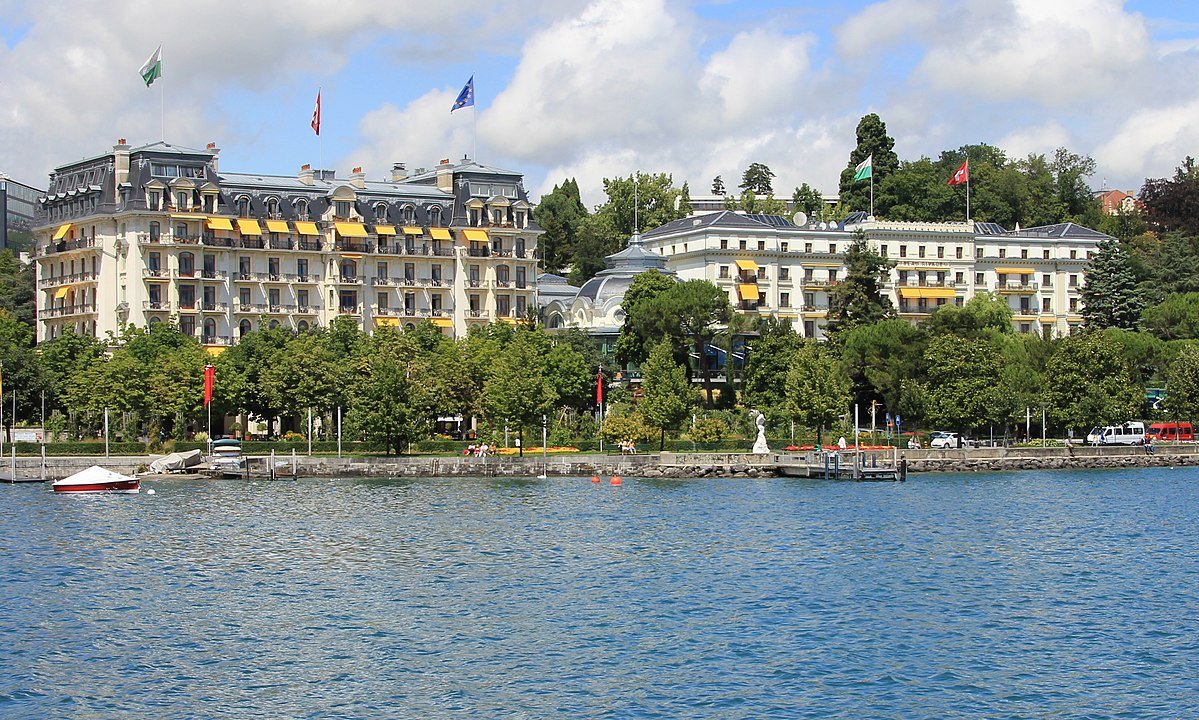Achilleion
The Achilleion, Sisi’s palace on Corfu, Greece
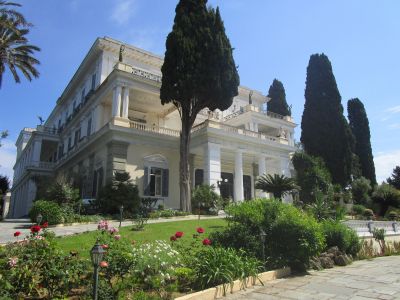 Achilleion Palace, Corfu
Achilleion Palace, CorfuI totally understand why Empress Sisi adored this Island; the weather, the views, the food, the people, all wonderful!
When you are on vacation on the lovely island of Corfu and have a few hours to spend, I strongly recommend taking a tour to this lovely palace!
The Achilleion Palace, built by the order of Empress Elisabeth of Austria, is located on the beautiful Greek Island Corfu.
Sisi named the palace after her all-time hero Achilles, a greek Mythological half-god that we know from the Troyan war. A statue of him can be found in the gardens of the palace. Greek Mythology is the main theme all around the estate.
DISCLOSURE: I get commissions for purchases made through some of the links in this article.
Ode to the ancient Greek in the gardens of Achilleion
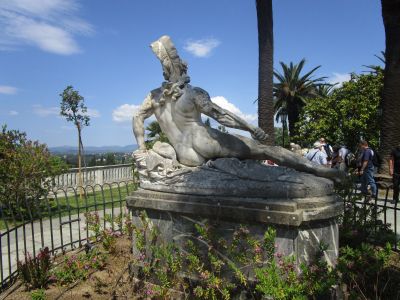 Statue of the wounded Achilles at the gardens of Achilleion Palace
Statue of the wounded Achilles at the gardens of Achilleion PalaceThe Palace is located on a hill near the little village of Gastouri, and has great views over the surrounding hills, the sea and Kerkyra (Corfu city) in the distance.
Sisi (or in fact Franz-Joseph) bought all the surrounding land that leads down to the sea This gave her access to the estate when arriving by boat.
The Italian architect Raffaele Caritto did a wonderful job designing a lovely little palace in honour of the Greek hero Achilles.
Ernst Herter, a German sculptor, created numerous works inspired from Greek mythology, the centrepiece being “The Wounded Achilles”. Sisi placed this statue on the most prominent place in her garden.
On the terrace, in the garden and on the balconies and roof, everywhere you see beautiful statues that depict centaurs, Muses holding torches, Greek Gods and even a Greek courtesan from the 4th century BC.
Sisi had a great interest in, and admiration for Greek history, culture and mythology. She studied both the ancient Greek and new Greek language, which she spoke fluently.
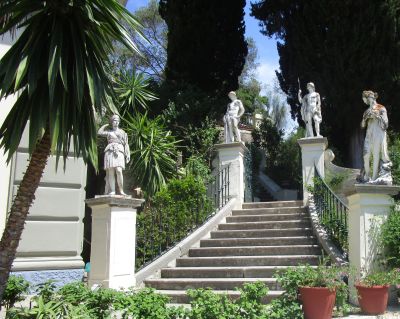
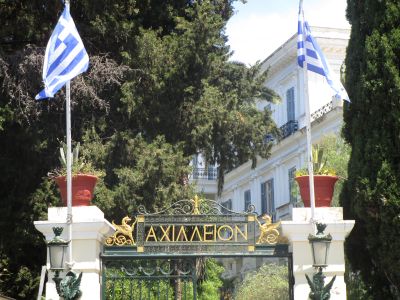 Entrance Achilleion
Entrance Achilleion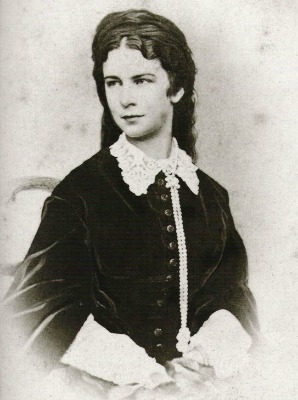 Empress Elisabeth of Austria (Sissi)
Empress Elisabeth of Austria (Sissi)The palace was built between 1889-1891. Sisi would visit the place frequently in the years to come, to relieve her from the depressions that followed after the death of her only son. On January 30, 1889 Crown Prince Rudolf killed his mistress and took his own life.
Sisi spent the time reading and studying, hiked and roamed the Island on horseback.
Frans Joseph only visited the island of Corfu once for two days, and even then he did not spend the night in the Achilleion. By that time the marriage of Sissi and Franz-Joseph was as good as over and they only spend time together on very rare, official occasions
Interior of the Achilleion Palace
There are not many rooms to visit within the palace, but the ones that are open to the public are as beautiful as the outside and gardens.
The main entrance hall and staircases are magnificent, with beautiful paintings, fresco’s in wonderful colours and statues everywhere. The little chapel is lovely too, and there are some interesting artefacts on display that used to belong to the owners of the palace, empress Elisabeth and Emperor William II.
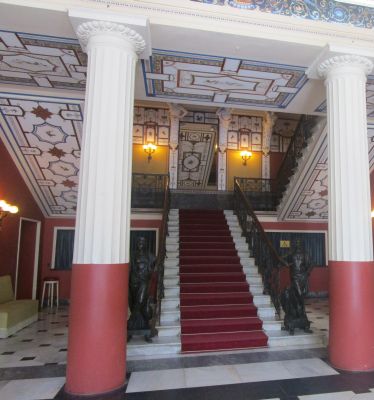 Achilleon main staircase
Achilleon main staircase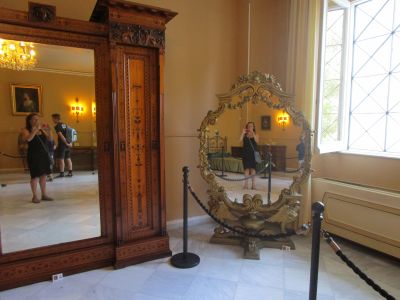 The cracked mirror in the bedroom of Sissi (by the way, that's me in the reflection!
The cracked mirror in the bedroom of Sissi (by the way, that's me in the reflection!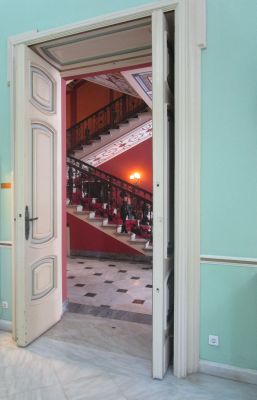
Some interesting anecdotes: The hands are removed from all the clocks that are displayed in the Achilleion. Empress Sisi did not want to be reminded of the time passing, and neither did she want to live according to a strict timetable.
In Sisi’s bedroom, the large mirror cracked during her last stay there, and she predicted to her lady-waiting that this would be the last time she visited the island of Corfu. She proved to be right, she was assassinated by Luigi Luccheni in 1898.
When on Corfu Sisi could relax and did not have to obey the strict protocol that rules the court. You can see that in the way she dressed, she had a special wardrobe that she only wore there. You can read about the Corfu dresses here.
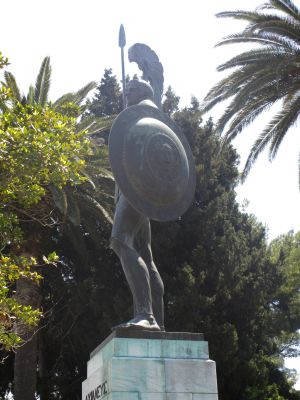
After the death of Empress Elisabeth, the Achillion Palace was left vacant for 9 years. It was finally bought by emperor William II of Germany (Kaiser Wilhelm). The first thing the Kaiser did was move the dying Achilles to a less prominent position in the garden, and replace it by a huge triumphant Achilles made of Iron and bronze.
He thought this would reflect him better! Word goes that he placed an inscription on the statue: "To the Greatest Greek from the Greatest German". This was removed after the war.
He could only enjoy the palace for a couple of years, in which he would frequently visit it, until the outbreak of the First World War in 1914. During World War I, the Achilleion was used as a military hospital by French and Serbian troops. After this war the palace became the property of the Greek state.
